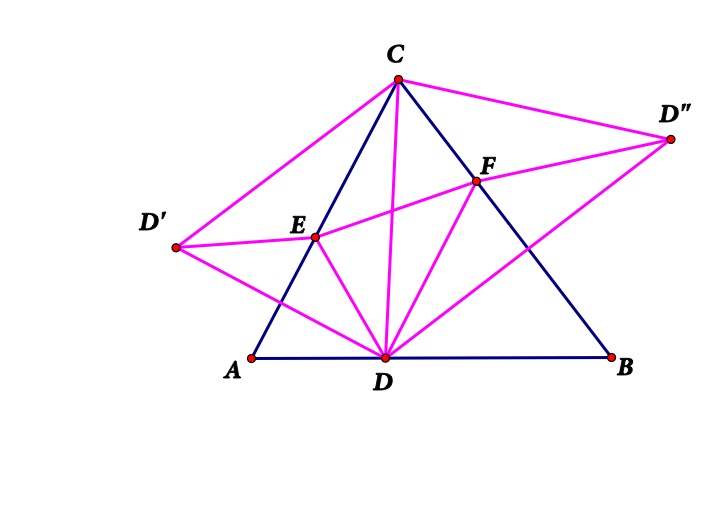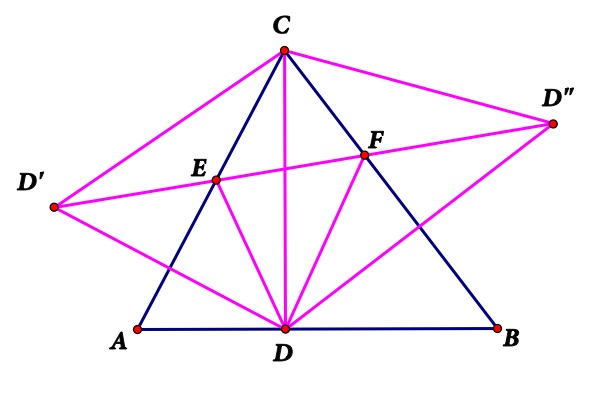
Minimalist Principals
By: John Vereen

LetÕs
construct the triangle of minimum perimeter inscribed in a given triangle.
Depicted above, we have a general triangle ABC and a general inscribed triangle
DEF and a segment that connects C to D. In order to construct this triangle, I
reflected segment CD across both AC and CB to give me segments CDÕ and CDÓ. We
will use these two new triangles CDDÕ and CDDÓ in order to construct this
minimal perimeter triangle.

Above, we have a similar image to the
first image depicted. However, there are a few key differences. First of all,
segment CD is orthogonal to segment AB. Secondly, the segments DE, EF, and FDÓ
compose a straight line. My claim is that triangle DEF is the triangle with
minimum perimeter.
Why is triangle DEF the triangle with
minimum perimeter? Well, because we reflected CD and reflection is an isometry, distances and angle measures are preserved.
Therefore, triangles CDDÕ and CDDÓ are isosceles triangles because,
respectively, they have the same measures for each side and angle DCE=DÕCE and
angle DCF=DÓCF.
Now letÕs observe the angle bisectors
AC and BC for each respective isosceles triangle CDDÕ and CDDÓ. Because we have
constructed two other segments DE and DÕE of equal length that share an angle
bisector, then we have another isosceles triangle DDÕE. We have the same
relationship between segments DF and DÓF and isosceles triangle DDÓF. This
means that segments DE and DF are at minimal length under one condition.
Now, segments DE, DF, and EF will
only be at minimal length when DE, EF, and FDÓ compose a straight line DDÓ.
This means that segment EF covers the shortest distance possible between the
two isosceles triangles, which is a straight line. The only way that DDÓ will
be a straight line is when CD is orthogonal to AB. Thus, I have proven that
triangle DEF is the minimal triangle when we have the specific conditions of
the construction above.